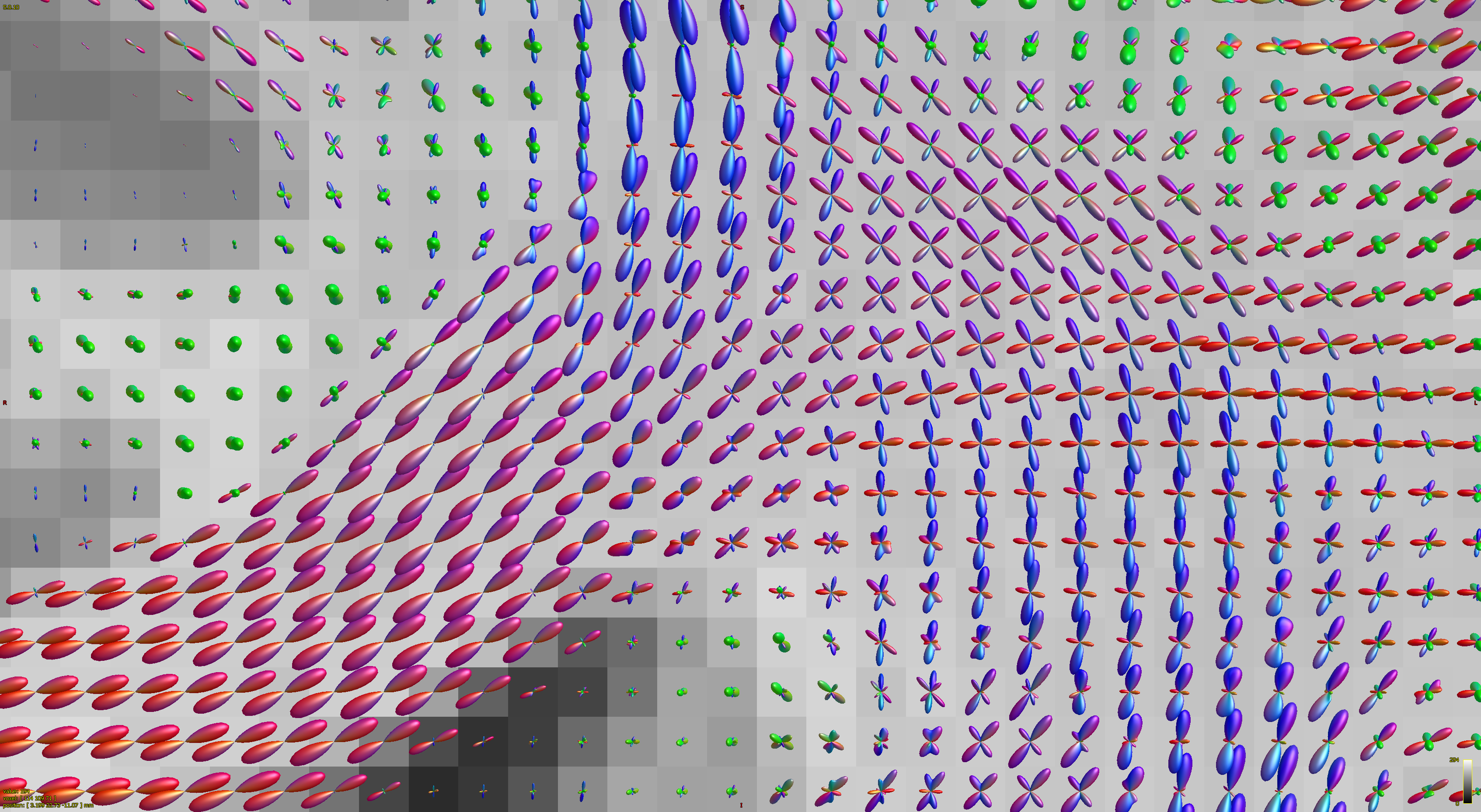Project: Glyph visualization & animation for diffusion MRI
Description

Background: Diffusion-weighted magnetic resonance imaging is a technique aimed at measuring the displacement of water molecules inside biological tissues. From those acquisitions, it is possible to reconstruct fiber orientation distribution functions (fODF) describing the apparent quantity of white matter fibers going through a voxel (3D pixel) for some arbitrary direction. Because these fODF are signals on the sphere, they are usually represented using a spherical harmonics (SH) basis, and visualized as radially scaled spherical glyphs.
Goal: First, to perform real-time peak extraction (or maxima detection) from a set fiber orientation distribution functions. Extracting the main direction of a glyph is a form of dimensionality reduction which can help reduce clutter. The peaks are also the main component for tractography, a technique which allow the reconstruction of nerve fibers in the brain and has various applications, e.g., in neurosurgery. Second, glyphs can also be viewed as "particles" whereby a particle-system can be implemented with animated functionalities based on the underlying diffusion direction, enabling users to detect patterns in the data.
Details
- Student
-
MJMattijs Jansen
- Supervisor
-
 Maxime Chamberland
Maxime Chamberland
- Secondary supervisor
-
 Anna Vilanova
Anna Vilanova